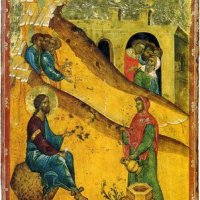
King Henry VIII--"a most intolerable ruffian and a blot of blood and grease on the history of England" - Shakespeare
In the year 1534 the King of England broke the church in his country away from the Roman Catholic Church. On the surface it may appear that Henry VIII was a few years late to the Protestant party and thus a blip on the screen of history, upon further examination the creation of the Church of England is a major turning point in the history of the Church. King Henry, who desperately desired a male heir to his throne, was willing to usurp headship of Christ’s Church for the English Crown so he could secure a divorce from his aging wife who had thus failed to birth a surviving son. Although the motive that led to the Protestant Reformation coming to England was not theological but political, the Reformation came just the same. With the passing into law of the English Act of Supremacy in 1534, Henry declared that the head of the Church was the State. Church-State relations have never been the same, with some church revolting against this new arrangement and others embracing it. History shows us the unintended effects of such placing the State in charge of the Church.
Mark Noll’s book Turning Points addresses this historic moment, explaining some of the factors that led to the Act of Supremacy and detailing many of the consequences that followed. See below for a summary of Noll’s chapter, along with a few links for further reading.
The English Act of Supremacy: Breaking from Rome, the English Parliament declared King Henry VIII “the only supreme head on earth of the Church of England.”
Henry VIII: “Defender of the Faith”
Catholic Counterpoint: What was it like to be on the losing side of England’s Reformation?













